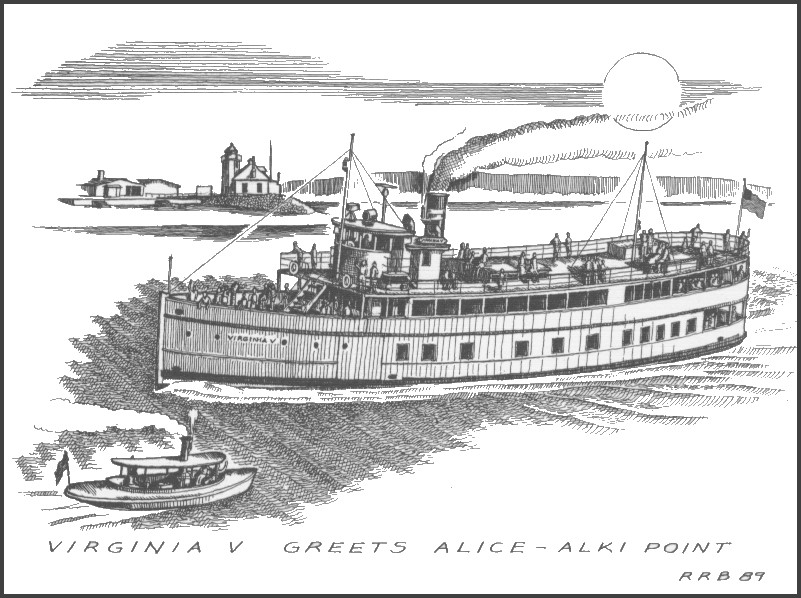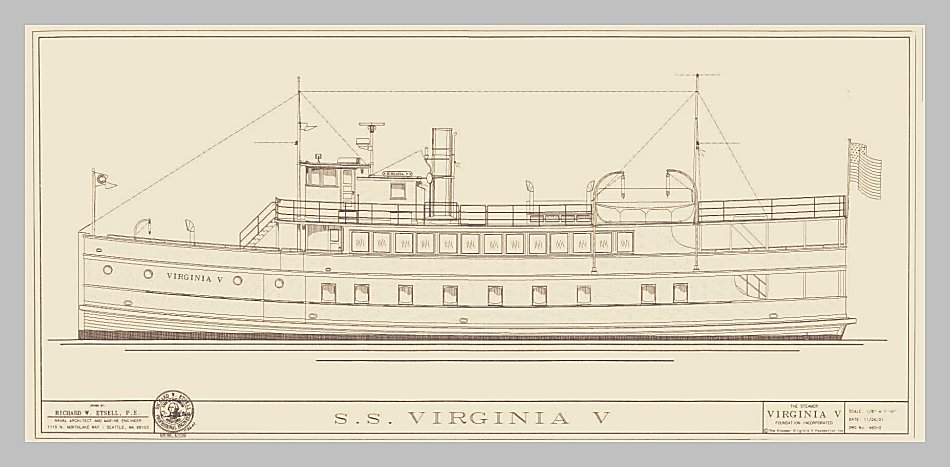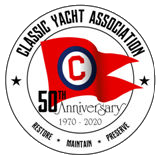Historical Summary:

In 1921 Anderson & Company of Maplewood, Washington, began construction on Virginia V. The ship was built of local old-growth fir. She was launched March 9, 1922, and towed to downtown Seattle for the installation of her engine and steam plant. In Seattle the engine was removed from Virginia IV and installed in Virginia V. On June 11, 1922, Virginia V made her maiden voyage from Elliott Bay in Seattle to Tacoma down the West Pass. She continued to make this voyage nearly every day until 1938.




 This vessel is registered with CYA as an Honorary Vessel. Honorary Members are vessels or organizations that have been nominated by a CYA Fleet, and then approved by the CYA Board of Directors, for their historical significance or contribution to classic yachting.
This vessel is registered with CYA as an Honorary Vessel. Honorary Members are vessels or organizations that have been nominated by a CYA Fleet, and then approved by the CYA Board of Directors, for their historical significance or contribution to classic yachting.